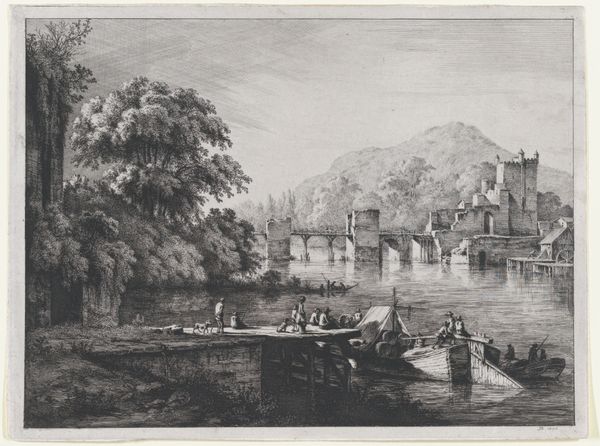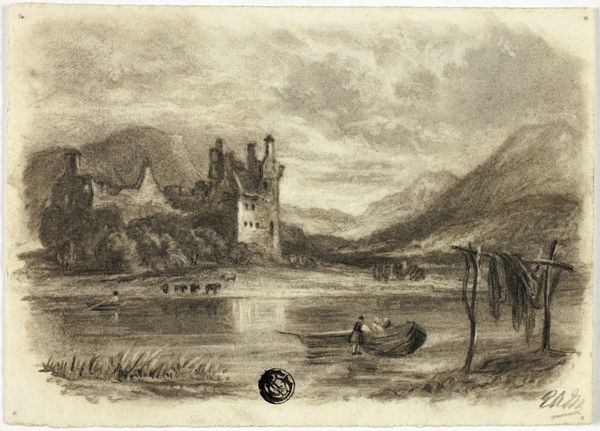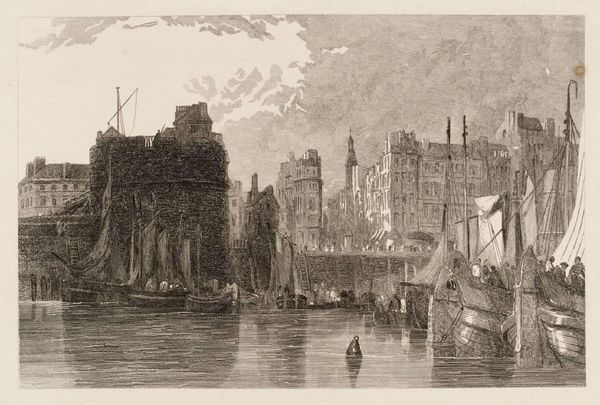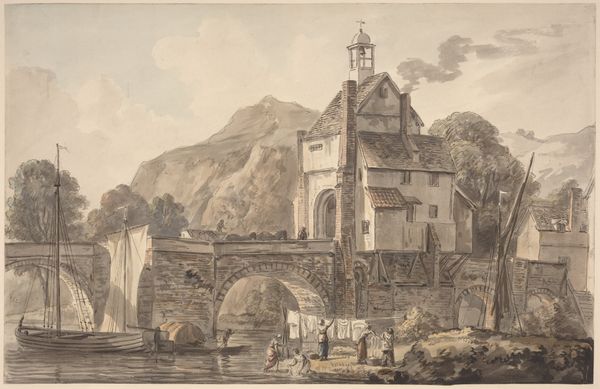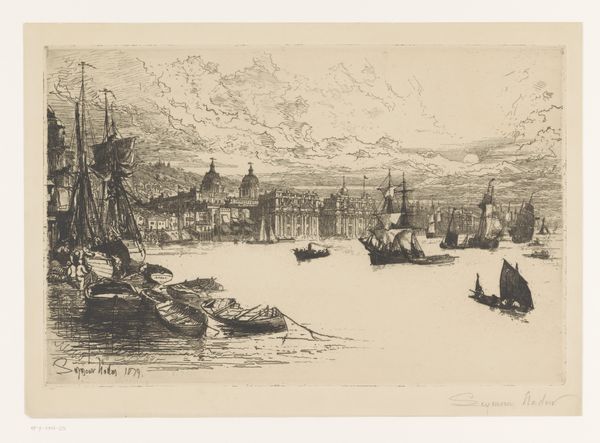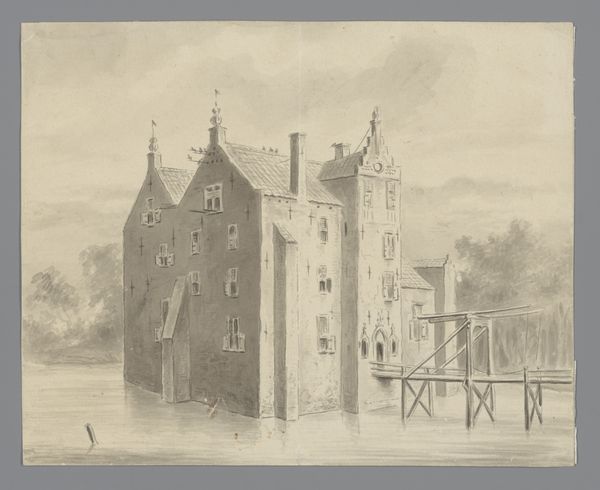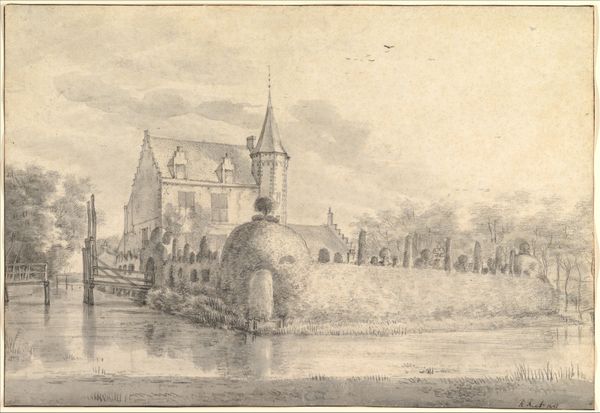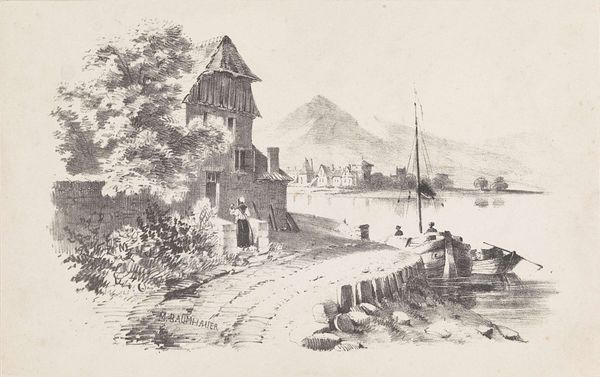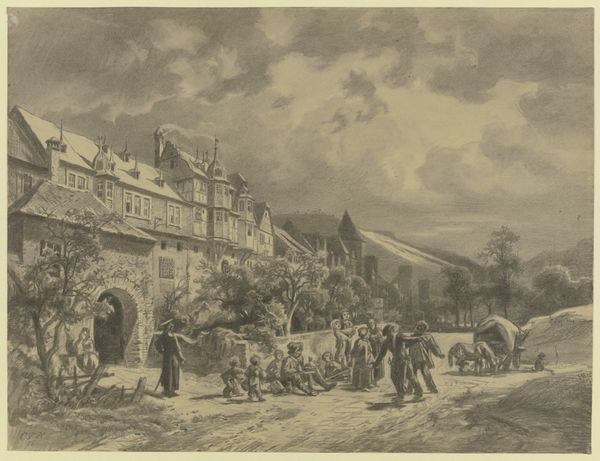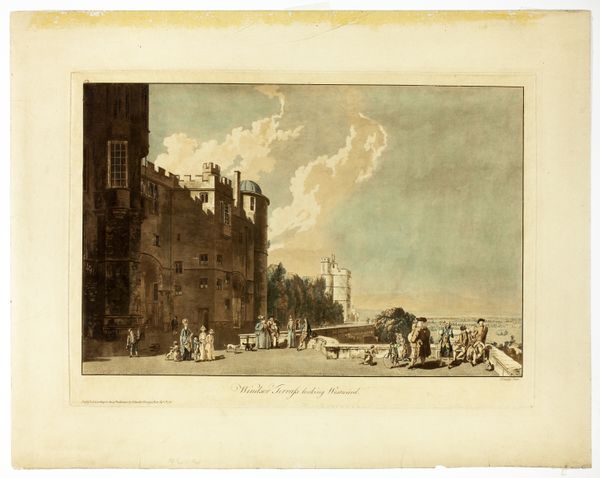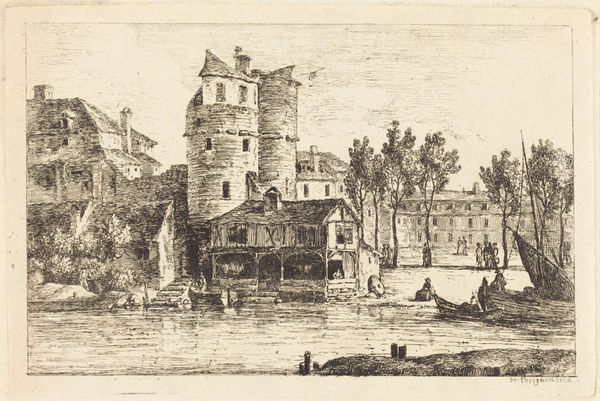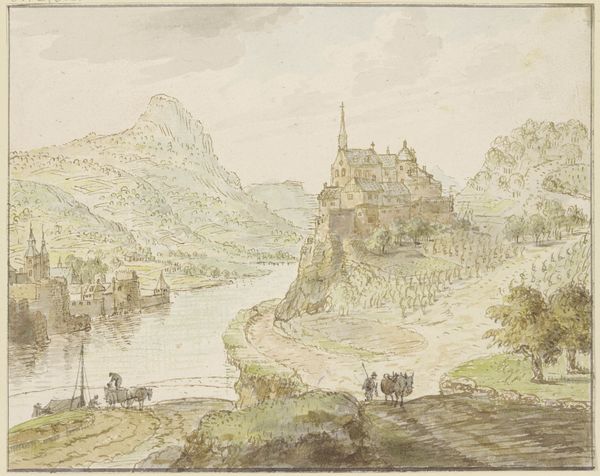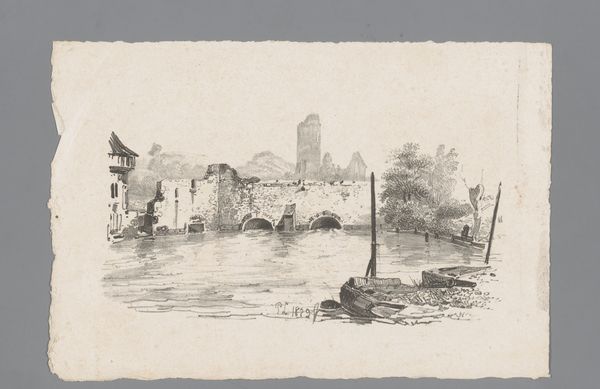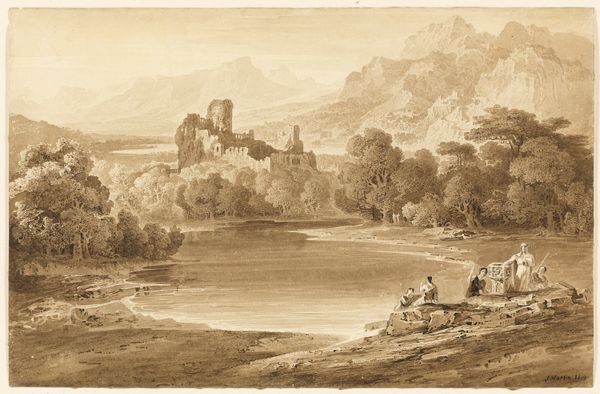
drawing, print, paper, watercolor, ink, chalk
#
drawing
# print
#
landscape
#
paper
#
watercolor
#
ink
#
chalk
#
water
#
cityscape
#
genre-painting
#
watercolor
#
realism
Dimensions: 182 mm × 280 mm
Copyright: Public Domain
Editor: Here we have "Fishing Boats Near Greves," date unknown, held at The Art Institute of Chicago. It's rendered in ink, watercolor, and chalk on paper, and has this beautifully muted, sepia-toned quality that gives it a vintage feel. I find myself drawn to the intricate lines of the boats and buildings; it makes the work so precise. How do you interpret this piece from a formal perspective? Curator: I find myself immediately captivated by the interplay of light and shadow. Note how the artist uses the watercolor to establish broad tonal planes, effectively structuring the composition into distinct spatial zones. Observe the texture created by the layering of chalk and ink to achieve depth, thus creating a semiotic relationship that provides visual balance. The artist invites the eye to wander. What formal relationships do you discern between the boats in the foreground and the architectural elements in the background? Editor: It seems as if the artist is connecting daily life with the solidity of the landscape. The details, especially in the boats, feel so deliberate, yet they are framed by these grander elements. Curator: Precisely. Moreover, consider the artist's technical virtuosity, demonstrated in the application of line. Close inspection reveals a nuanced range of linework, contributing significantly to the formal dynamism. What theoretical frameworks can further illuminate the symbolic or structural aspects of this piece, in your view? Editor: Perhaps a structuralist approach? Focusing on how the elements work together rather than what they mean individually? Curator: Indeed, the underlying structures shaping our perception of space, form, and representation warrant investigation. How might that inform the city scape and the portrayal of the subject, considering both are presented together? Editor: It changes how I see both. Seeing it as two forms gives the drawing a kind of organized approach rather than a relaxed illustration. I appreciate understanding art’s structural language now. Curator: And I find myself considering anew how surface texture contributes to the structural and aesthetic meaning within. Thank you for your keen insight.
Comments
No comments
Be the first to comment and join the conversation on the ultimate creative platform.
